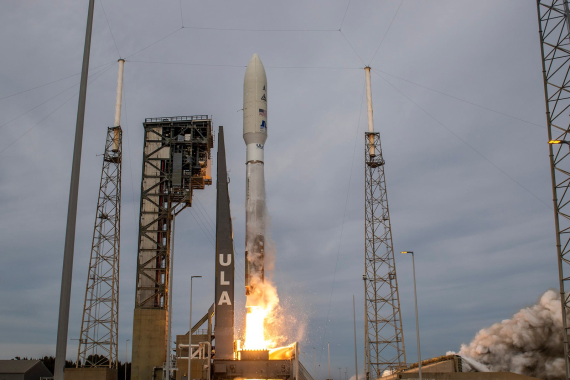FAS R9's Supportive Relationship with the Space Force Reaches New Heights
FAS R9’s Supportive Relationship with the Space Force Reaches New Heights
By Javier Fernandez

The U.S. General Services Administration (GSA) and the U.S. Space Force enjoy a strong collaborative business relationship today; but that wasn’t always the case. For nearly a decade, the Federal Acquisition Service (FAS) Region 9 Assisted Acquisition Services (AAS) and the Office of Customer and Stakeholder Engagement (CASE) engaged in strategic relationship building and business development efforts to identify assisted acquisition partnership opportunities.
From accurate weather forecasts, providing navigation directions, keeping atomic time, to facilitating online shopping transactions, we rely on satellites as part of our daily lives. Space Systems Command (SSC), headquartered in Los Angeles, California, is responsible for developing, acquiring, equipping, fielding, and sustaining lethal and resilient space capabilities for warfighters. As part of fielding, the command is responsible for launch operations, on-orbit checkout, developmental testing, sustainment and maintenance of military satellite constellations and other Department of Defense space systems.
The SSC is the U.S. Space Force’s main procurement branch and center of technical excellence for developing, acquiring, and managing sustainable military space systems. The command executes an annual budget of $11 billion to develop and deliver capabilities that provide the warfighter agile, integrated, resilient and protected effects in space to meet critical national imperatives. Established in August 2021, SSC is the latest redesignation of the storied Space and Systems Missile Center (SMC), first established as the Western Development Division in 1954, making it the oldest space organization in the U.S. military. The U.S. Space Force heralded a new era of American investment on its space defense assets and infrastructure, standing up SSC. Created to protect the nation’s space interests, the U.S. Space Force’s specialized mission also means it faces unique procurement challenges.
“Our efforts paid off three years ago when we scored our first high-value projects, executing several Advisory and Assistance Services (A&AS) actions from cradle to grave,” said Joel Fada, FAS Region 9 AAS Director. “Our customers were very pleased with FAS R9 AAS and recognized the value that we provide. Particularly how SSC could leverage our office as a force enabler; allowing their acquisition staff to focus on their core mission activities while we handle their professional services portfolio.”
As a result, the SSC decided to use FAS R9 assisted acquisition services to satisfy the needs of their entire professional and advisory services program portfolio, worth an estimated $4 billion over 10 years. FAS is continually providing the SSC with new AAS contracts, with the latest one awarded in January 2022 for Systems Engineering & Integration (SE&I) and worth in excess of $750 million, breaking the region’s previous record to become the region’s largest dollar value Task Order. The SE&I program supports highly technical and sophisticated work that supports the Space Force’s development of the Next-Gen Overhead Persistent Infrared early missile warning satellite system.
As the SSC seeks to modernize and replace aging satellite systems as well as develop and acquire new advanced technologies to maintain U.S. space supremacy, FAS R9 AAS stands poised to help it achieve its mission. Underscoring GSA’s commitment, the region has assigned 20 employees to support the SSC portfolio. In the past three years alone, FAS R9 AAS has awarded 16 task orders, is currently executing 10, and has an additional 30 projects in the pipeline.
“FAS R9’s relationship with SSC has grown significantly over the years. Not just in the magnitude of work that we support, but also in the way SSC has invited FAS R9 AAS to be part of the acquisition planning process at the start of new projects,” said Karina Levitas, FAS Region 9 AAS Group Manager. “Our relationship has grown from providing service on a task order by task order basis, as they came in, to a trusting partnership focused on strategic planning for their mission and requirement needs. We’re at the table now, helping them plan 10 years into the future.”

 U.S. General Services Administration
U.S. General Services Administration